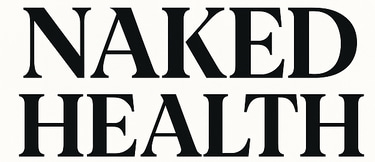The Sunscreen Scam: Why the Sun Isn’t Your Enemy (But Your SPF Might Be)
You’ve been told to fear the sun. But maybe it’s the sunscreen you should worry about. Here's what the sunscreen industry doesn’t want you to know—and how to protect yourself without sabotaging your health.
FUEL + FLOW
Hank Cramblin
8/7/20252 min read


☀️ The Sunscreen Scam: Why the Sun Isn’t Your Enemy (But Your SPF Might Be)
1. Wait—Sunscreen Might Be Making Me Sick?
Yes. Let’s start with that bombshell.
Several mainstream sunscreens—yes, the ones lining your local pharmacy—contain ingredients that have been linked to hormone disruption, allergic reactions, and even carcinogenic effects when exposed to sunlight.
Take oxybenzone, for example. Once a darling of SPF formulations, it’s now banned in places like Hawaii because of its impact on coral reefs. But more importantly? Studies published by the Environmental Working Group (EWG) and Journal of the American Medical Association have shown that oxybenzone is systemically absorbed through the skin and detected in blood, urine, and breast milk—long after use.
In 2021, benzene, a known human carcinogen, was found in dozens of name-brand sunscreens, including Neutrogena and Banana Boat. The FDA acknowledged the contamination. The brands pulled products. But millions had already used them.
So here’s the harsh truth: while you're slathering on chemicals to avoid the sun's dangers, you might be introducing new ones directly into your bloodstream.
2. The Sun Is Not the Villain (You Just Don’t Understand It)
The modern fear of the sun is a relatively new phenomenon. For most of human history, the sun was seen as a source of life and healing. And scientifically? It still is.
Here’s what healthy sun exposure gives you that SPF 100 can’t:
Vitamin D synthesis (80–90% of your vitamin D comes from UVB exposure, not food)
Serotonin boost, improving mood and mental clarity
Circadian rhythm regulation, helping you sleep better at night
Immune function support, reducing risk of autoimmune disease
Nitric oxide production, which supports blood pressure and heart health
Over 40% of Americans are vitamin D deficient. That’s not a sun problem. That’s a sun avoidance problem.
Of course, overexposure is harmful. But total avoidance? Just as dangerous—just in slower motion.
3. How to Protect Yourself Without Poisoning Yourself
You don’t need to fry like a lizard or live like a vampire. Here’s a better approach:
✅ Smarter Sun Habits
Get early sun (before 10 a.m.) and late sun (after 4 p.m.) when UV is gentler
Start with short bursts of 10–20 minutes and build your tolerance
Avoid burning—red skin is inflammation, not toughness
✅ Cover Up the Right Way
Wide-brimmed hats, UPF-rated clothing, and sunglasses are chemical-free shields
Shade breaks throughout the day help you dose sun exposure like medicine
✅ Safer Natural Sunscreens
Look for mineral-based sunscreens with non-nano zinc oxide or titanium dioxide. These sit on the skin rather than absorbing into it, and they reflect UV rays instead of causing chemical reactions.
Some reputable brands include:
Papa Bear Naturals
Badger
Raw Elements
Babo Botanicals
And remember: your diet affects your skin’s resilience too. Antioxidants like astaxanthin, vitamin C, and omega-3s act as internal sunscreen, helping reduce the damage UV rays can do.
4. Stop Fighting the Sun. Learn to Use It.
We’ve been trained to treat the sun like an enemy. But in truth? It's one of the most powerful natural regulators of health we have. Blocking it completely—without questioning why—has had devastating downstream effects on everything from immunity to mental health.
Sunscreen has its place. But it should never replace education, moderation, or respect for your biology.
The sun is not trying to kill you. It’s trying to wake you up. You just need to know how to listen.
